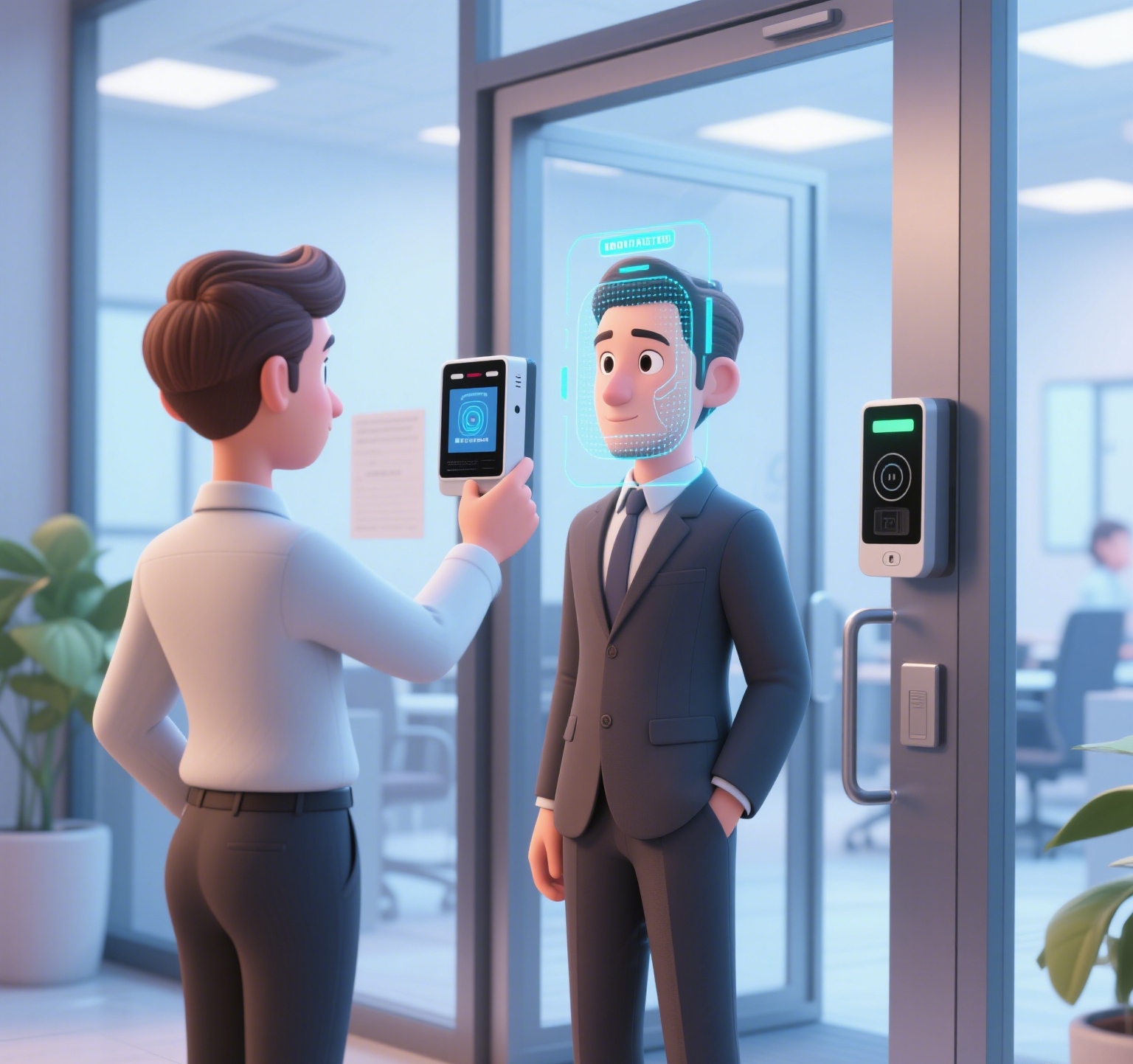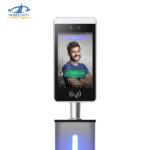What Is Face Recognition?
Face recognition technology—also known as facial recognition technology—is a biometric authentication method that identifies or verifies individuals using their facial features. It has rapidly evolved from mobile phone unlocking to playing a critical role in access control systems, attendance tracking, and even security surveillance.
Whether used in a face recognition attendance system or in an access control gate, this technology offers a touch-free, fast, and secure alternative to traditional identification methods. With rising demand in industries ranging from corporate offices to public transport, facial recognition is becoming a foundational element of smart security infrastructure.
How Face Recognition Technology Works
At its core, face recognition systems use AI-powered algorithms to capture, analyze, and compare facial data:
1.Face Detection
The system scans photos or live video streams to accurately detect and isolate human faces, even in varying lighting or crowded scenes, preparing for further biometric analysis.
2.Facial Feature Extraction
After detection, the system analyzes key facial landmarks—such as eye spacing, nose shape, and jawline—and converts them into a unique digital face template.
3.Face Matching
The system compares the extracted face template with those stored in its database, using AI algorithms to verify or identify the individual with high accuracy and speed.
Depending on the system, the process can happen in real-time (e.g., face recognition online free) or locally on devices like a face recognition app or access control terminal.
Applications of Face Recognition Technology
1. Access Control Systems
Facial recognition terminals are widely integrated into doors, turnstiles, and gates to prevent unauthorized access. Ideal for:

Corporate offices
Facial recognition enables secure, contactless access and attendance in corporate offices, improving entry efficiency, employee tracking, and overall workplace security.

farm management
Facial recognition in farm management helps identify workers, track attendance, and restrict access to sensitive areas, enhancing labor management and operational security.

School
Facial recognition in schools enhances campus security, automates student attendance, and ensures only authorized individuals enter, creating a safer and more efficient learning environment.

subway
Facial recognition in subways enables fast, contactless passenger entry, improves security monitoring, and reduces fare evasion, enhancing both commuter convenience and system efficiency.
2. Face Recognition Attendance System
A popular alternative to fingerprint scanners, these systems automatically log in/out time with high accuracy and hygiene. Great for:
Schools and Universities
Facial recognition systems automatically track student attendance as they enter classrooms or campus gates. This reduces manual roll calls, prevents proxy attendance, and ensures real-time monitoring of student presence—improving administrative efficiency and campus safety.
Offices and Factories
In corporate and industrial environments, face recognition streamlines employee time tracking by eliminating punch cards or fingerprint touchpoints. It minimizes time fraud (e.g., buddy punching), supports shift management, and maintains hygiene in high-traffic work areas.
Hospitals
For medical staff, facial recognition enables fast, touchless login and attendance—critical in sterile environments. It also helps restrict access to sensitive areas like operating rooms or medicine storage, ensuring both hygiene compliance and patient safety.
3. Public Safety & Surveillance
CCTV integrated with facial recognition can alert authorities to wanted individuals, reducing crime and improving public security.
4. Face Recognition Apps & Mobile Devices
Facial recognition is widely integrated into smartphones and mobile apps for secure, convenient authentication. Common uses include unlocking devices, authorizing mobile payments, and verifying identity in banking or fintech platforms. For example, iPhone’s Face ID uses 3D facial mapping to ensure high security and user convenience. This technology reduces reliance on passwords, streamlines login processes, and enhances protection against fraud across digital services.
Benefits of Face Recognition Technology
1.Touchless & Hygienic
Face recognition systems operate completely contact-free, eliminating the need for physical touch. This not only enhances user convenience but also supports hygiene and safety—especially important in post-pandemic workplaces, schools, hospitals, and public areas.
2.Fast & Efficient
Facial recognition offers lightning-fast authentication, significantly reducing waiting times at access points. Whether for employee check-ins, airport boarding, or smartphone unlocking, the process is seamless and efficient—enhancing user experience and throughput.
3.High Accuracy
Advanced AI algorithms analyze multiple facial data points to ensure accurate matches, even in challenging conditions like poor lighting or face masks. This high precision reduces false positives and unauthorized access, making it suitable for high-security environments.
4.Scalable
Facial recognition technology is highly adaptable, working on mobile devices, desktop software, and biometric hardware terminals. It supports a wide range of use cases—from enterprise attendance to financial authentication—making it a future-ready solution for scalable growth.
Is Face Recognition Safe and Private?
Security is a top concern. Modern systems use:
AES encryption for data storage
Liveness detection to prevent spoofing with photos or videos
Compliance with GDPR and other local data protection laws
If you’re using a face recognition system from a reputable vendor like HFSECURITY, user privacy and data security are built in.
Popular related face recognition products
Videos on face recognition technology applications
Conclusion
Face recognition technology is redefining how organizations secure entry points and manage time tracking. With its speed, safety, and flexibility, it’s proving to be the smart, contactless solution for modern access control and attendance needs.
FAQ
Face recognition is used for access control, time attendance, identity verification, surveillance, and mobile authentication.
Yes. Many vendors offer face recognition online free or paid cloud platforms for web-based identification and verification.
It depends. Face recognition is touch-free and faster, while fingerprint scanning can offer slightly higher accuracy in some scenarios. Many systems use both.
Yes. Apple’s Face ID is a form of facial recognition used for unlocking, payments, and app access.
Top systems achieve accuracy above 99.5%, especially with controlled lighting and liveness detection enabled.





